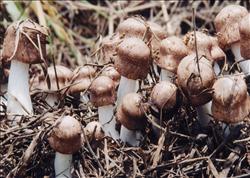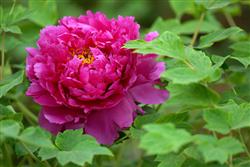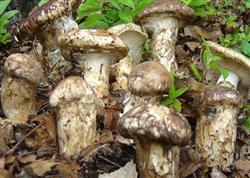Agaricus blazei Murrill cultivation: which diseases and insect pests should be controlled when planting Agaricus blazei Murrill?

Which diseases and insect pests should be controlled when planting Agaricus blazei Murrill? Do netizens can guide Agaricus blazei Murrill in the process of planting common diseases and pests are slugs, mites, nematodes, mushroom mosquitoes, mushroom flies, umbrella fungus, walnut fleshy fungus and verrucosporium, Agaricus blazei Murrill has the ability to resist miscellaneous bacteria, generally free from miscellaneous bacteria, the key is to pay great attention to ventilation, so as not to make the mushroom room or bed surface too wet for a long time. The following describes the detailed prevention and control methods for netizens' reference. 1. Slugs: the control effect of using 6% Mida granule twice can reach 93.6%, and the control effect of killing 20G/ mu with 70% WP 100 snails can reach 87.4%. (how to operate with these particles, just a little bit finer! (2) mites: pasteurization of culture material can effectively control the occurrence of miscellaneous bacteria, mixed with triclofenac, or sprayed with chrysanthemum esters on the bed, and fumigated with aluminum phosphide in severe cases. 3. Nematodes: the culture material can effectively kill nematodes by pasteurization. In mild cases, double milk (50x) or marathon emulsion (500X) was used to spray the material surface, and in severe cases, aluminum phosphide was used to fumigate the mushroom room. 4. Mushroom mosquitoes: sprayed with pyrethroid (1000X) or dimethoate (1000X). 5. Mushroom fly: the control effect of using 2.5EC cypermethrin 3000 times for 3 times can reach 84Mu90.3%. 6. Ghost umbrella bacteria: the maturity of the culture material should be good. When there is too much free ammonia, it should be treated with formaldehyde before going to bed. If the bed surface has appeared, the ghost umbrella should be removed immediately and disappear by itself after the temperature drops. 7. Walnut fleshy bacteria: the control effect of 2000 times with 50%WP can reach 76.0%. 8. Verrucosporosis: the culture material is required to be fermented twice in the mushroom, pasteurized by steam (keep 6 ℃ for 10 hours), the soil is disinfected with 50% formalin (2KG/M2 soil), and the bed and surrounding environment are evenly sprayed with efficient fungicides or carbendazim when transferring water after covering the soil. When the disease occurs, you should immediately stop spraying water, increase ventilation, reduce the temperature and humidity of the mushroom room, dig up the diseased mushroom, mycelium and cover soil, replace it with new soil, spray the above pesticides evenly on the affected site, and use the same concentration as above or double. In severe cases, the mushroom room was fumigated with formalin (10ML/M) or aerosol disinfection box (2-4G/M) for 1 hour, ventilated for 3 days, and then sprayed after the bed was dry. Click to get more planting techniques of Agaricus blazei Murrill
- Prev

Peony planting: how to manage the flowering period of peony?
How to manage the flowering period of peony? What does peony florescence need to pay attention to? Please introduce the management of the flowering period of peony can be carried out with reference to the following methods. Fertilization at flowering stage of peony: the first time was pre-flowering fertilizer, which was carried out in early October. This fertilization has a great promoting effect on the flowering of peony that year, that is, promoting flowering.
- Next

Cultivation of Agaricus blazei Murrill: how to control mites by planting Agaricus blazei Murrill?
What is the harm of mites to the cultivation of Agaricus blazei Murrill? How does Agaricus blazei Murrill control mites? Ask netizens to help introduce the harm of mites to the cultivation of Agaricus blazei Murrill: mites mainly take nymph or adult mites to harm the mycelium of Agaricus blazei Murrill, bite off the mycelium and eat it; it will also eat the fruiting body into holes, and the color of the mushroom will turn brown or lose.
Related
- Fuxing push coffee new agricultural production and marketing class: lack of small-scale processing plants
- Jujube rice field leisure farm deep ploughing Yilan for five years to create a space for organic food and play
- Nongyu Farm-A trial of organic papaya for brave women with advanced technology
- Four points for attention in the prevention and control of diseases and insect pests of edible fungi
- How to add nutrient solution to Edible Fungi
- Is there any good way to control edible fungus mites?
- Open Inoculation Technology of Edible Fungi
- Is there any clever way to use fertilizer for edible fungus in winter?
- What agents are used to kill the pathogens of edible fungi in the mushroom shed?
- Rapid drying of Edible Fungi

